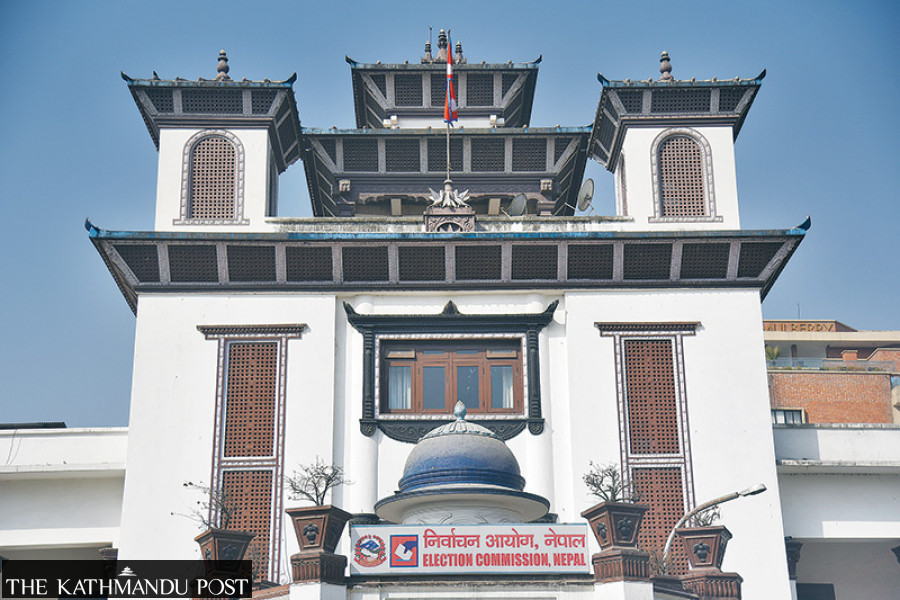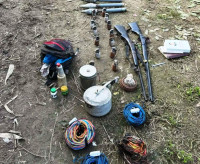National
Election Commission mulls reducing campaign duration to 15 days
Submission of the lists of proportional representation candidates by political parties on September 18-19 and first-past-the-post candidacy registration on October 9-12 likely.
Nishan Khatiwada
With the general and provincial elections announced for November 20, the Election Commission has expedited its preparations endorsing the poll schedule for its own use.
In the internal schedule of the commission, the election commission has scheduled the first-past-the-post (FPTP) candidacy registration for October 9-12 after the Dashain festival.
However, the political parties will be asked to submit their closed lists for the proportional representation (PR) electoral system on September 18-19. On September 27, election officers will be appointed and election offices will be set up on October 7. On November 20, the voting will take place all over Nepal from 7am to 5pm. The internal schedule has been endorsed for internal use, and there are chances of amendment if required, the officials say.
The commission started registering political parties from August 7. Until Saturday, as many as 40 parties had been registered at the commission, Surya Prasad Aryal, information officer and assistant spokesperson for the Election Commission, said.
According to him, discussions are underway to demand funds from the Finance Ministry. The work of modifying policies and directives is also underway. “Work on updating the voter roll using the latest voter data from the districts is also ongoing. While doing so, any errors on the roll will also be corrected,” Aryal said.
“After receiving funds from the government, the commission will begin the process of printing ballot papers and arranging logistics for the polls.”
According to commission officials, discussions are going on to reduce the duration of election silence and campaigning periods. Chief Election Commissioner Dinesh Thapaliya said at an interaction on Sunday that the commission is preparing to reduce the campaigning period to 15 days from 39 days.
“There are suggestions that the longer the campaigning period, the costlier the elections will be,” Aryal said. “So we are mulling over reducing the campaigning period. Also we need ample time to print ballot papers and dispatch them across the country. We will soon decide the matter.”
When the election date was announced, only 107 days were left for elections, even as the Election Commission Act 2017 calls for 120 days from the announcement to the polling day.
But if such a period is less than 120 days, the duration between the announcement date and the day on which the final results are made public will be considered the election period, the Act states.
Regarding the tenure of existing lawmakers of both the federal parliament and provincial assemblies, the Election Commission has already clarified that for lawmakers fighting elections, their term will end after they register their candidacies and for others the term will expire on December 7.
The five-party ruling coalition has already decided to contest the elections under an alliance. Other parties including the Loktantrik Samajbadi Party and the Janata Samajbadi Party are in negotiations with bigger parties to better their poll prospects. On Sunday, Baburam Bhattarai’s Nepal Socialist Party decided to contest the polls using Maoist Centre’s election symbol. The CPN-UML is still undecided whether it will fight the elections single-handedly or form an alliance.
On November 20, Nepal will vote to elect 275 members for the House of Representatives—165 under the FPTP system and 110 under the PR system. Simultaneously, 550 members for the seven provincial assemblies will be elected—330 under the FPTP system and 220 under the PR system.
However, voters will not be able to exercise voting rights through electronic voting during the upcoming polls since the parties are unwilling to adopt the electronic voting mechanism just yet, Thapaliya said at the function.
The Election Commission has estimated the cost for the upcoming polls at Rs10 billion.
According to the commission, around 18.20 million voters have already registered for the polls and the number will increase as voter roll updating work is underway. There will be separate ballot papers for the FPTP and PR systems for both the House of Representatives and provincial assemblies.




 19.12°C Kathmandu
19.12°C Kathmandu

%20(1).jpg&w=200&height=120)













